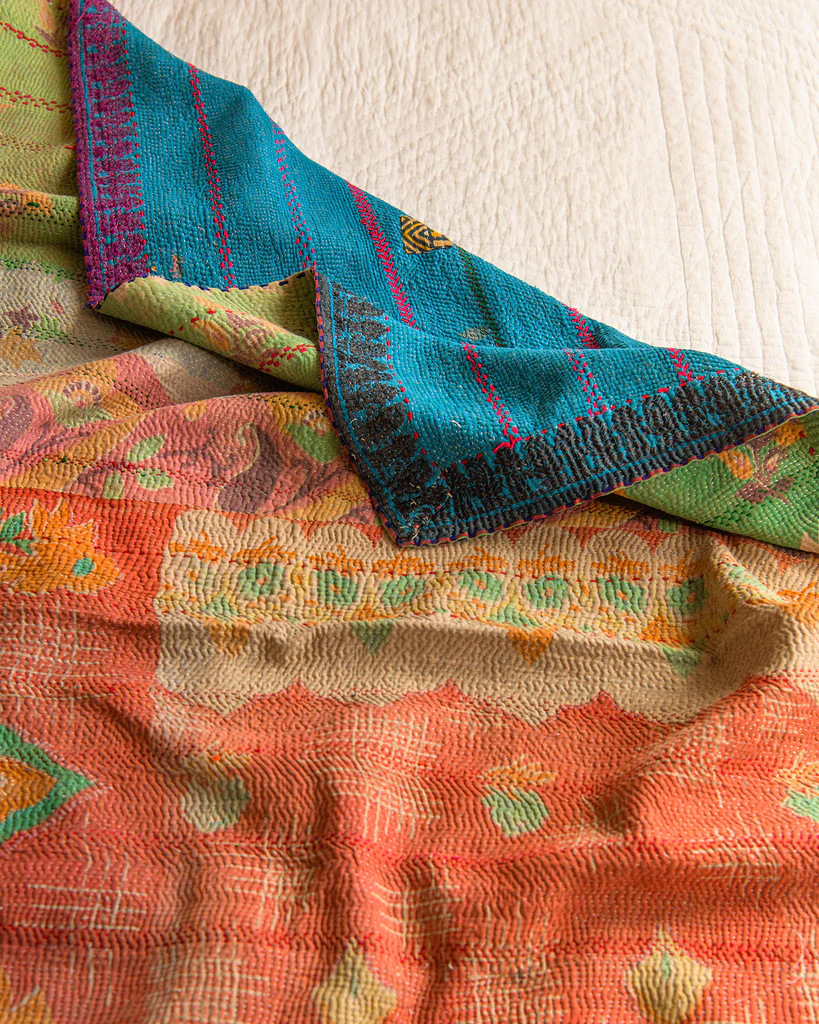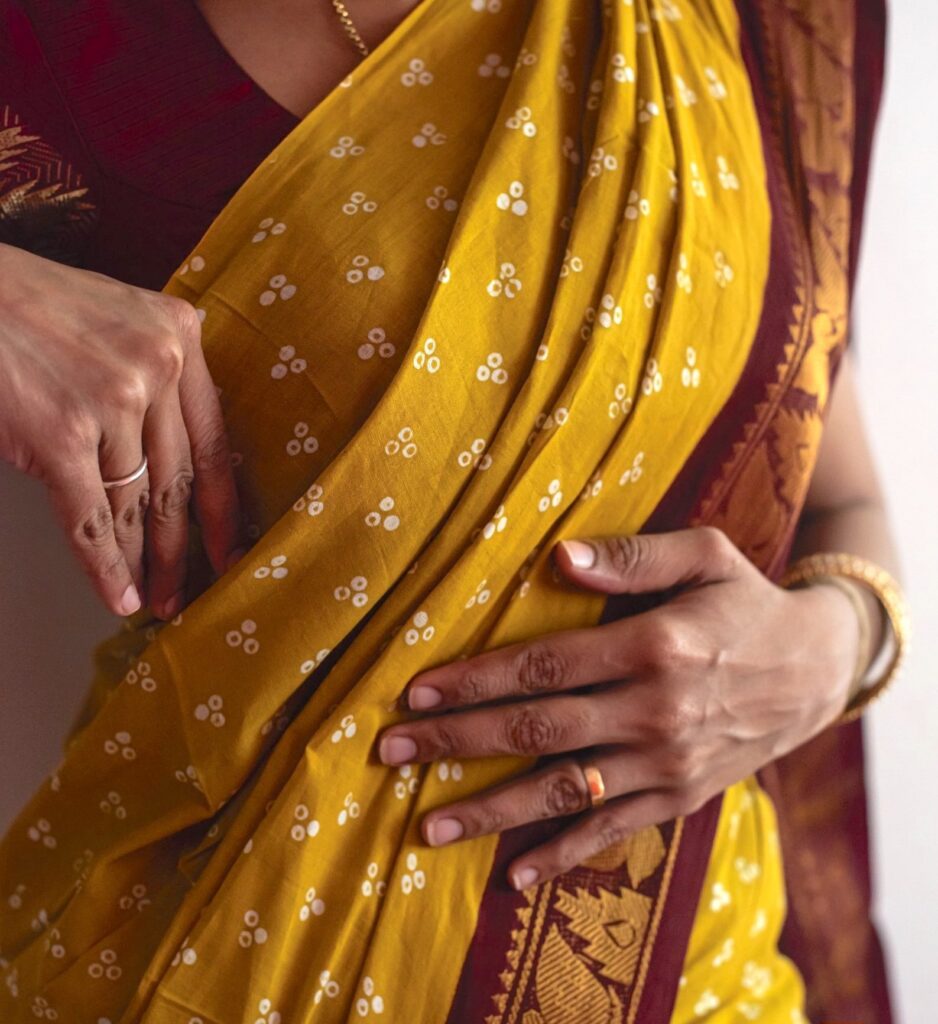
Kantha: a stitch in time…
I don’t remember when I learnt the term ‘Kantha’ but my love for this cozy, colourful fabric has always been tucked away somewhere in my subconscious mind. One November, many (…many) years ago, I was visiting my grandmother in who lived in a big old house in old Delhi (I have a feeling this ‘Dilli 6’ house is going to be popping up quite a lot on this blog!). Delhi had suddenly tumbled into winter and we could all feel the chill that day. Usually the courtyard was a sunny, cheerful place and all the kids would run around playing hide and seek. My aunts would spread muslin cloth on the floor and leave the red chillies and other spices out to dry before they would be powdered. That day, however it was grey and dark. Fat rain drops began to fall, and Hari (the help) scurried to move the spices indoors. It was as if the weather had cast a spell on all the ladies of the house. Everyone decided to take a siesta after lunch. I loved these rare afternoons of quiet when my grandmother would sit on the diwan and write in her diary and I would be sprawled on the floor beside her, happily reading my books.
She called out to Hari that afternoon and handed him a large skeleton key. I watched curiously as Hari took this unusual looking key and approached one of the wooden cupboards. He twisted the handle and it opened easily. What happened next was probably the highlight of that year’s summer holiday for me. Hari fidgeted with the key, as if opening a drawer and then he –crawled into the cupboard and I, a child of 10 years, was absolutely bewildered. Where did Hari disappear to? I ran to the cupboard and to my amazement there was a tiny secret room behind the cupboard. I visited this old house every single year, but this was new. It was magic! My cousin and I could play house! I could live here! Basically my little mind was blown! Hari, climbed out of the literal hole in the wall and with a stack of blankets. Thick, velvet blankets for the night and Kantha blankets for the day. He made a few more trips and got all the blankets out of the storage. I remember I was particularly fascinated by the colourful ones, the one with flower, leaf, bird motifs on it. Of course I didn’t know what it was called then but when Hari threw a Kantha over the diwan, I wrapped myself in it immediately and thought it was the most cozy thing in the world. Maybe it was the earthy colours, maybe it was the hypnotic motion of the running stitch, that lent the fabric a comforting rhythm. It smelt a bit earthy from the storage, but it was that wonderful library book smell. With my head on my grandmothers lap, I was fast asleep in no time, dreaming of secret compartments for top secret meetings.
Every winter after that, I see the stack of kantha’s on the diwan and I think to myself– a kantha itself is like a cherished memory–woven intricately, holding the story together, comforting and supporting the whole. To this very day, I remember how incredibly excited I was when I discovered it! I am even more excited to see it pop up everywhere in western homes and wardrobes.
Kantha’s have travelled far and wide, they’ve been made popular by stores such as Anthropologie and Free People. Every boho babe seems to be proudly showing of her wildly intricate, hand stitched Kantha’s which are conveniently stacked by the sofa or on their ottomans. By day they add a wonderful jolt of colour to the room and by night they are perfect for snuggling on the couch with a movie and a bowl of pop corn. With so many unique styles and colours a piece of Kantha, draped over a couch or hung as a tapestry, could add great depth to any living space. Oh, and did I mention they are reversible? One side could have emerald green paisley prints with a vibrant patch of pink florals, and the other could have a denim feel with 70’s style sunflowers – they’re so quirky, you’ll never get bored of it!
The origin of Kantha (pronounced KAHN-taa) embroidery can be traced back to the eastern states of India. This is one of the oldest known forms of embroidery and was first practised by rural woman. Bundles of old sarees, rags and other cloth would be traded at door steps for small earthen pots and utensils. The cloth would be taken back to villages where women would sort out the ‘good pieces’, stack them and hand stitch them together with with a running stitch around the edges, to form quilts or thin cushions. They would also embroider motifs and patterns to depict their dreams and wishes. Elaborate Kanthas were made for weddings with good wishes woven in. Like an heirloom or a blessing, Kantha’s were also passed on from mother to daughter, for many generations. Today, however, this fabric is no longer made of rags, but from the remnants of well-worn silk sarees. A new life is given to beautiful old, antique sarees. The stitching is intricate and the geometry of design is nearly impossible to mass produce making each Kantha unique and one-of-a-kind.
“I love pairing kanthas with midcentury pieces to warm up the clean lines, layering them on beds to create rich pattern, and leaving a pretty folded pile in the living room so that we can pull them out when we’re lounging on the couch.”
— stylist and blogger Justina Blakeney


